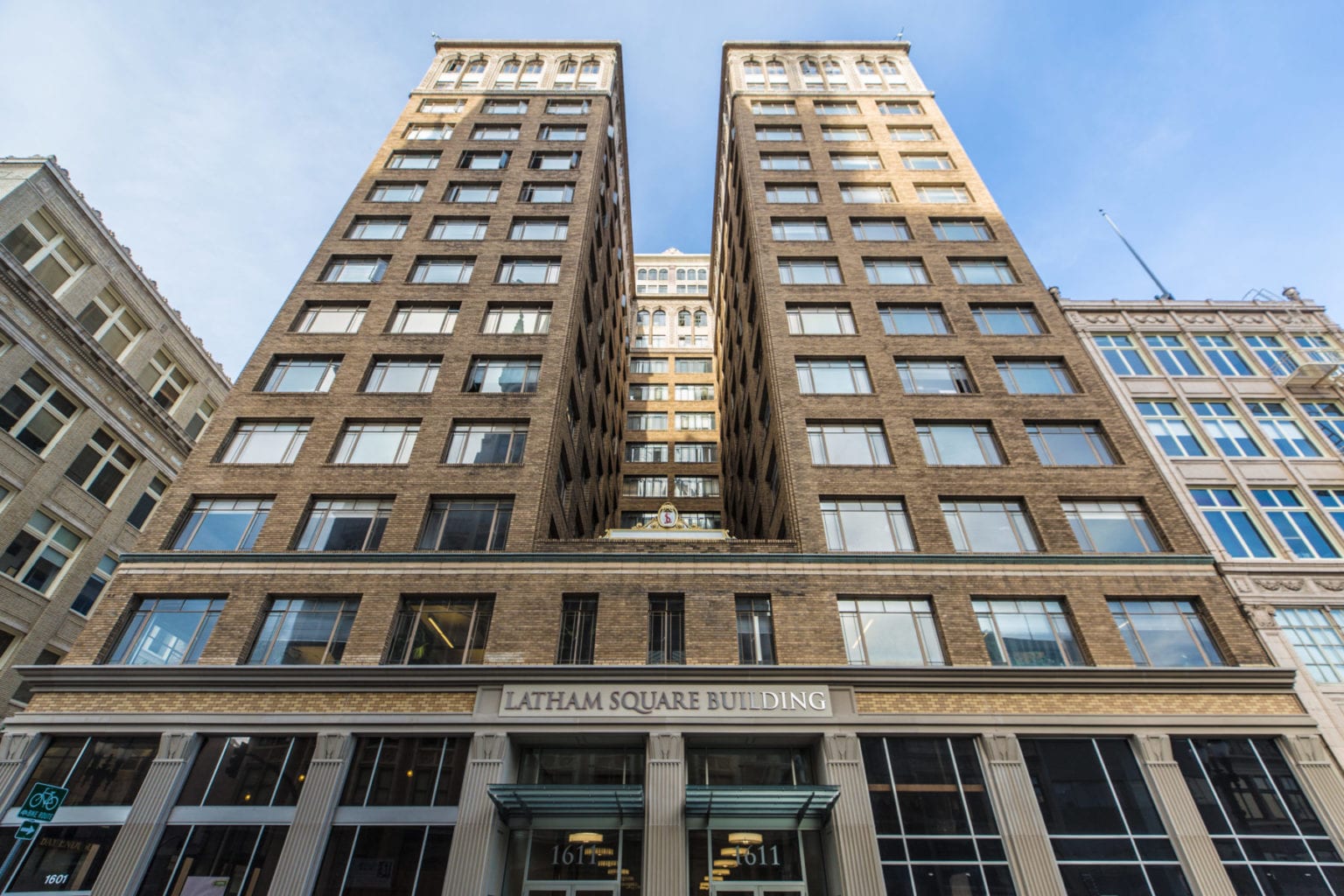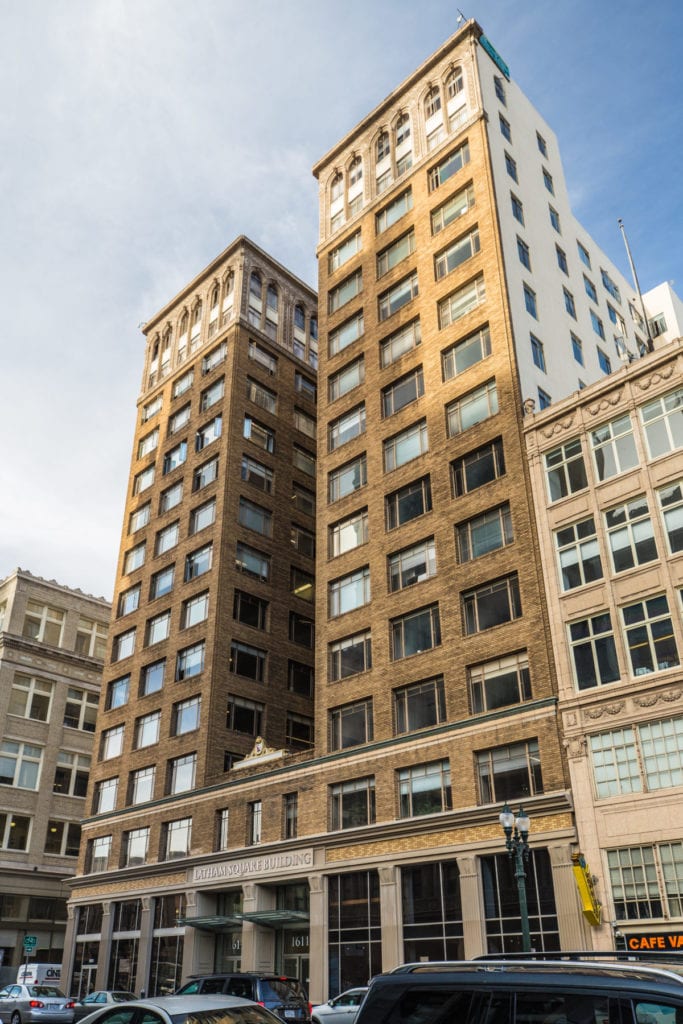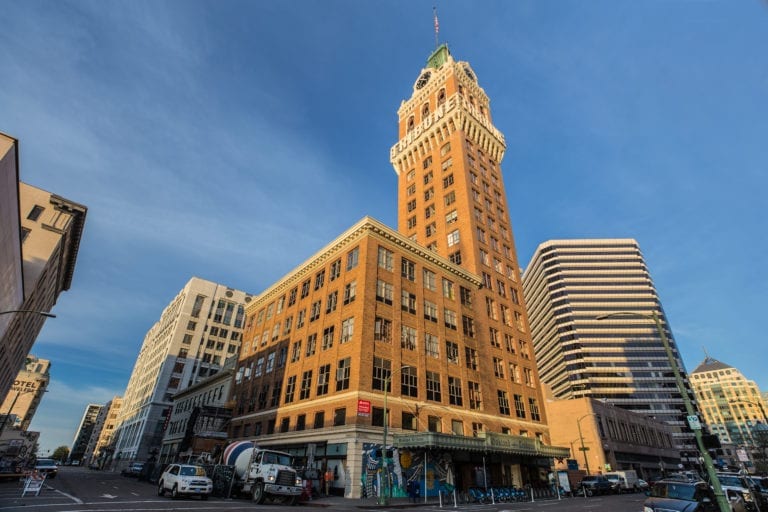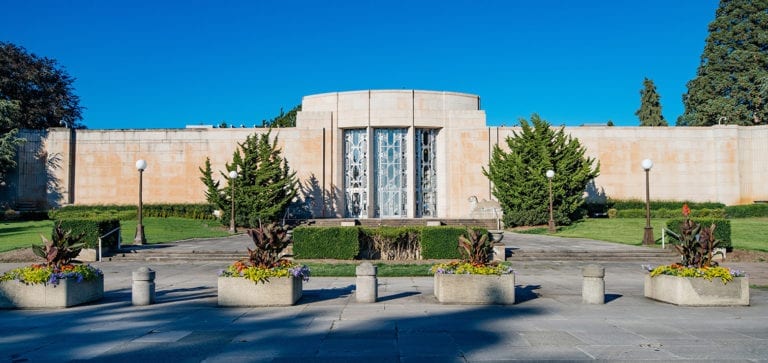The Latham Square building in Oakland, California, was built in 1927 and is one of 43 contributing buildings in the Downtown Oakland Historic District. The neoclassical 14-story high-rise consists of two adjacent towers clad with a steel frame and applied masonry. A building restoration was completed in 2016 that coincided with the City of Oakland’s Latham Square Pilot Project. This project revitalized the triangular open space adjacent to the building at the intersection of Broadway and Telegraph Avenue into a vibrant, more pedestrian-friendly plaza that connects two shopping districts. The building restoration project included a full seismic retrofit, new electrical and plumbing infrastructure, a new façade, and many other upgrades and aesthetic enhancements.
We were retained by the general contractor on the restoration project, Pankow, to assist with the design of the new glass fiber reinforced concrete (GFRC) cladding that would replace the building’s existing façade at the ground level. Our team also consulted on the design of the water barrier and air barrier membrane behind the GFRC system to ensure that it properly integrated with the existing façade elements, including the historic brick masonry and windows that remained in place. During the construction stage, we conducted field review of the installation of the GFRC, waterproofing, and flashing.
One project goal was to update the retail-level façade to serve as a transition between the historic exterior of the building and its contemporary interior. GFRC was selected as a cost-effective cladding option that could mimic a historic building with fluted columns and other historic details. To meet the project goal, we had to determine how to waterproof the existing, very rough concrete substrate behind the existing façade that was removed. We also had to detail the transitions between the new and historic façade and windows that remained in place.
Our team improved the façade and cladding design by eliminating the moisture-sensitive sheathing and steel studs, and instead smoothing the existing concrete with a repair mortar and using a compatible fluid-applied air and water barrier membrane—a less expensive but much more durable, airtight, and watertight solution. We also helped save project costs by assisting with the development details so the existing windows could remain in place.
The building now offers creative office space to its tenants plus ground floor retail space.
Share This Post
Date:
July 6, 2020
Client:
Pankow, Inc.
Our Role:
Building Enclosure Consultant







